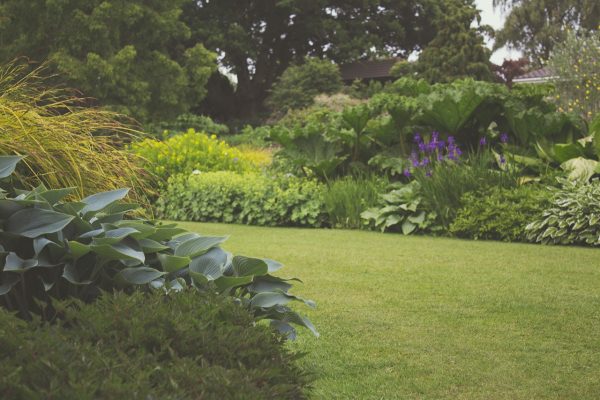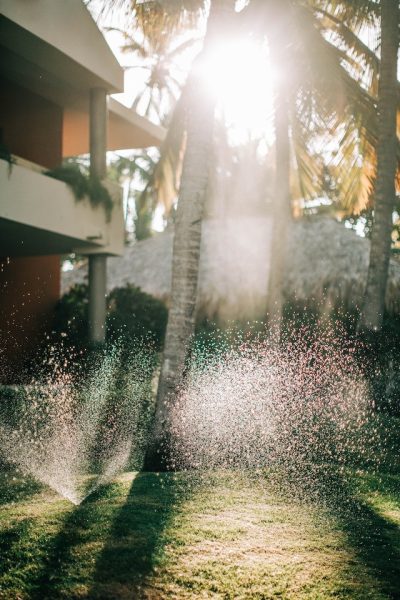Are you looking for an eco-friendly way to keep your lawn green and healthy? Smart watering strategies can help. With the proper techniques, you reduce water waste while still giving your lawn the necessary care. You can create a sustainable landscape that will thrive in any season by understanding how much water is needed and when to apply it. In this article, we’ll discuss the various watering strategies available so you can choose the best one for your needs.

Having an Eco-Friendly Lawn
Having an eco-friendly lawn is a great way to reduce water consumption while ensuring your landscape looks beautiful. By using smart watering strategies, you can make sure that your lawn remains healthy and green without using excess water. Additionally, an eco-friendly lawn can help you save money on your utility bill and provide important environmental benefits.
Environmental Benefits
These are the main environmental benefits of using innovative watering strategies for an eco-friendly lawn:
#1. Reducing Water Waste
Smart watering strategies help reduce water waste by applying only the right amount needed for your lawn. This helps conserve our natural resources and prevents excess runoff and flooding.
#2. Preventing Soil Erosion and Pollution
Excess runoff from improper watering can also lead to soil erosion, which can cause land degradation and pollution. These strategies help reduce runoff and keep your soil healthy.
#3. Conserving Energy
Traditional watering systems often require the use of pumps and other mechanical tools. These can be energy-hungry and contribute to your carbon footprint. Innovative watering strategies eliminate the need for these tools, reducing energy consumption significantly.
Smart Watering Strategies
Many smart watering strategies can be used to ensure your lawn stays green and healthy without wasting water:
#1. Timed Irrigation Systems
These systems use sensors to detect soil moisture levels, allowing them to know when it’s time to water the lawn. This ensures that your lawn gets the right amount of water at the right time, so you’re not wasting any. These systems also come with rain shutoff features that can detect when it’s raining and automatically turn off the system.
#2. Drought-Tolerant Plants
Adding drought-tolerant plants to your landscape is a great way to reduce water consumption. These plants can survive in dry conditions and still look beautiful year-round. Additionally, they require less maintenance than other plants, so you won’t have to worry about over-watering them.
#3. Mulching
Mulching is another great way to conserve water in your landscaping. Adding a layer of mulch around your plants can help the soil retain moisture for extended periods, reducing the amount of water that needs to be applied to keep them looking healthy.
#4. Water Reclamation Systems
Water reclamation systems are designed to capture, store, and reuse water from sources like rainwater or runoff. This allows you to use the same water multiple times instead of wasting it on a single application. Additionally, these systems can reduce your utility bill by decreasing the water needed for irrigation purposes.
These are just a few of the many smart watering strategies that can be used to create an eco-friendly lawn. By understanding how much water your landscape needs and when to apply it, you’ll enjoy a beautiful and sustainable yard all year round.
You can also ask professionals such as Heroes Lawn Care. Professionals can assess your landscape and advise you on the best strategies to use for your specific needs.
When to Water?
In addition to choosing the right watering strategies, it’s also essential to know when it’s best to water your lawn. In most cases, this will depend on your climate and the type of plants you have in your landscape. Generally speaking, however, it’s best to water your landscape in the early morning or late evening hours when temperatures are more relaxed and the air is calmer. This will help you reduce evaporation and ensure that your lawn gets all the water it needs without worrying about wasting any of it.
Final Thoughts
Creating an eco-friendly and sustainable lawn is possible when you take the time to understand your landscape and use smart watering strategies. You can keep your lawn healthy without wasting any of our precious natural resources by using timed irrigation systems, drought-tolerant plants, mulching, and water reclamation systems. Additionally, knowing when it’s best to water your plants will help ensure that each application is as practical as possible. With a little research and careful planning, you’ll be able to enjoy the green and lush lawn of your dreams in no time!


